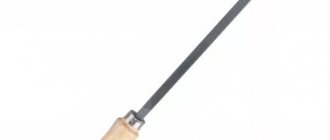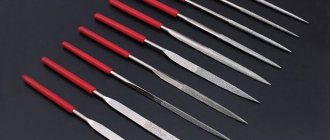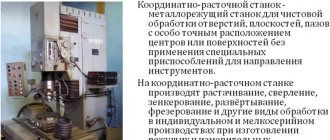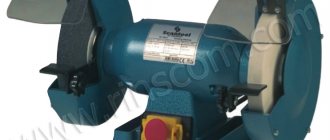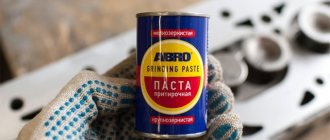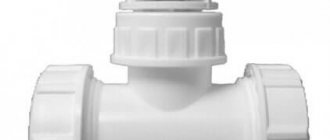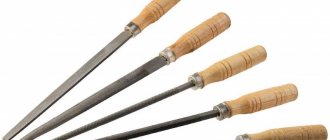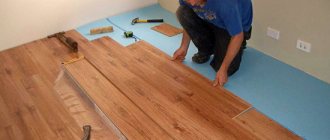A diamond needle file is an essential tool for any craftsman. You can even do jewelry work with it. A huge selection of different shapes and sizes makes it possible to reach the most difficult areas of an object and give corners and surfaces the proper look. But even such a simple tool has its own characteristics. We will talk about them in this article.
Is this a file?
A diamond file is a small file. The working surface of the device is coated with diamond coating. This ensures not just cutting the material during operation, but also scraping its surface, removing the thin layer located at the top. An ordinary nail file is also a type of needle file.
Diamond is one of the most expensive natural materials. But for what purpose is it used in the instrument? In reality, a stone of artificial origin is taken to create the device. Due to its high strength, diamond-coated needle files can work with glass, ceramics, durable steel and alloys.
A set of diamond tools allows a toolmaker to process the surface of a profile with a complex structure. Essentially, the devices perform the same functions as their steel counterparts, but cope with materials with a harder texture.
Size, grain size, product marking
The name of diamond needle files, as well as their shape and dimensions are regulated by GOST 151Z-67.
The length of the devices varies and ranges from 100 to 200 mm. As a rule, the most common models in stores are the lengths of 80, 120 and 160 mm. Moreover, the length of their working surface is 50, 60 and 80 mm, respectively.
The material from which the files are made must be harder than steel. When manufacturing a tool such as a diamond needle file, GOST 1435 and 5950 require the inclusion of carbon steel of the following categories: U12, U12 A, U 13, U 13 A, 13X. Hardness must be at least 55-58 units on the HRC scale.
Another important indicator is grain size. It lies in the size of diamond grains. The grain size is indicated by colored stripes or small marks. Such symbols can be seen on the handle of the device. They don't wash off.
It is easy to decipher the grain size:
- One red stripe or two small risks indicate that the indicator is 160/125-100/80.
- The presence of one blue stripe or one risk occurs at an indicator of 80/63-63/55.
- Models with the smallest grain size do not have any distinctive marks. This category includes devices with an indicator of 50/40-40/28.
What shapes do needle files have?
Diamond needle files are available in 12 types.
- Tools with three edges. They have a sharp or blunt end. This indicator determines the area of use of the device.
- Devices made in the shape of a rhombus. They make it possible to play with notches at a certain angle.
- Wedge-shaped devices are used when working with castes and valves (jewelry elements), as well as with angles with small values. Wedge-shaped devices have both a sharp and a rounded edge, but the nose of the device is sharp.
- The flat diamond needle file has versatility of use. The area of use depends on the size of the device.
- Grooved devices are similar to flat ones, but the edges on the sides are rounded. This makes it possible to treat hard-to-reach areas.
- Square devices are designed to work with grooves of a similar shape.
- With a semicircular shape. With their help it is possible to work with reliefs.
- Needle files with different convexities process the inner part of the ring.
- Oval fixtures are designed for holes.
- The round diamond needle file is able to work with rounded products. In addition, with their help, the required relief is created.
- The needle shape is fundamentally different from all other types. Firstly, it should be noted that these devices are miniature. The length of the working surface is 35-55 mm. Secondly, their tail is square.
- Another special type is the needle file. It should be discussed separately.
Devices with a blunt nose have the same cross-sectional size along their entire length. In pointed models, the cross-section of the rod decreases towards the edge of the device.
The notching itself is also performed in accordance with the standards. The main working parts of the tool have a double notch: main and auxiliary. Tools with a round or oval shape can have a single or spiral single cut.
Purpose and use of needle files
Needle files are used to process various parts, bringing them to certain sizes and shapes. The scope of application is not limited to metalwork and carpentry work. The tool is popular among engravers and jewelers.
The main task of a mini file is fine filing, stripping, and grooving into hard-to-reach places. Thanks to its small size, it is possible to process complex and small parts.
There are over 11 types of needle files. They differ in cross-sectional shape, length and number of main notches.
| Species name | Where is it used? |
| Flat/flat pointed | Treatment of external and internal flat surfaces. |
| Trihedral | Designed for grooves, grooves, holes, sharp corners, and the outer surface of the part. The rounded part is used for oval parts and reliefs. |
| Round | Passing through small holes, concave areas, finishing. |
| Semicircular | There is a flat and oval work surface. There are notches on them. Used in suitable parts and individual areas. |
| Rhombic | For passing over toothed parts. |
| Needle | It differs from other types in its miniature parameters. The length of the working part does not exceed 25-35 mm. A characteristic feature is the square shank. |
| Square | Polygonal holes, square and rectangular areas are available for processing. |
| Wedge-shaped | It has a sharp nose and a wedge shape. Used for processing caste, crops, sawing small corners. |
| Non-convex | Suitable for passing along the inside of rings and ring-shaped parts. |
| Grooved | Used for cleaning and sharpening hard-to-reach areas of the workpiece. |
| Hacksaw | Performs sampling of a groove or a narrow groove. |
| Rifle | Recognized by the strong bending of the working part. Area of application: jewelry workshops. It is made only from a magnetic hard alloy, which helps remove crumbs of precious metals after sharpening. |
The sizes and shapes of riffles intended for processing casting cores are described in GOST 11798–74.
According to the unified standard for flat needle files 1513–77, the main types are determined, taking into account notches:
- 1 and 2 – for each cm of the length of the working part of the tool there are from 28 to 56 notches;
- 3; 4 and 5 – from 40 to 112 notches.
The type of notch is indicated on the handle in the form of markings. The larger the notches, the higher the serial number.
Large notches perform rough processing of parts. Reliefs are turned with small needle files (No. 1 and 2), the third number is used for finishing turning.
Files
Diamond-coated tools are available with different grain sizes for the working surface. GOST 23461–84 determines their length - 100-200 mm. There are also specimens 80 and 160 mm long with a working surface of 50 and 80 mm. To make diamond-coated needle files, materials that are harder than steel must be used.
What determines the tool number?
The number of notches per 10 mm of product length determines its number. Manufacturers always indicate the tool number from 0 to 8. It is important to know: the higher the number, the more notches the tool has, which means that the teeth themselves are small, and the surface during processing will be smoother.
The length of the working surface of the file is always half as long as its total length. As already mentioned, it comes in three sizes: 50, 60 and 80 mm. A very important point should be noted here - the number of the notch depends on the type of size:
- devices with a working part length of 50 mm can have notches from 1 to 8;
- tools with an indicator of 60 mm can have notches from 1 to 7;
- instruments with a length of 80 mm are equipped with notches from 0 to 6.
It is difficult to say why this rule was chosen. Diamond needle files are produced according to a specific GOST, and you just need to figure out what set of devices exists in size.
Hand diamond needle files, conical, galvanized KD 160...,
Diamond flat conical needle files KD160... - excellent in flatness, width 4, 6 and 10 mm, thin at the tip - less than 0.5 mm, with the most popular grit. This set has been approved by dozens of experienced and novice polishers.
Characteristics:
- Total length: 170 mm
- Grain: 54, 64, 126, 181
- Thickness: 0.5-2.0mm cone
- Working length: 110 mm
- You can also buy a set of flat diamond files: article KD 1600
What kind of work are tools used for depending on the size of the teeth?
Tools with large teeth are needed for working with large surfaces or where large layers of metal must be removed. For example, such work can be done with a file with three edges and a large notch.
A medium-sized notch is more suitable for working with soft metals: brass, aluminum, bronze. Such needle files do an excellent job of polishing water pipe couplings for their optimal joining or removing nicks without “licking” the product.
The smallest teeth are designed for filigree work. The tools are able to enlarge the wedge groove on the electric motor shaft. They can clean burnt contacts of current collectors used in everyday life (sockets, circuit breakers, etc.).
There is a special notch that is located along the body of the device, and not transversely, as is customary. In this case, the cross-section of the canvas has a round shape. This diamond needle file is used for sharpening knives at home. It has its own name - musat. Sharpening proceeds more accurately and also much faster than with sandpaper.
On the market you can also see needle files of unusual shapes, which are extremely rare. They have a curved shape. Tools are used for processing internal curved grooves. As a rule, such devices have a notch on both ends of the instrument, and the handle is located in the middle.
Shapes of needle files and their application
Craftsmen often use a whole set of mini-files in a certain sequence.
Multi-stage processing of the part allows you to achieve optimal condition and correct all flaws without much difficulty.
According to the profile, the tool is divided into the following types:
- triangular pointed-nosed (triangular). They have three equal faces, respectively, three working edges. This form is suitable for processing corners, placing corner notches, turning small grooves inside and outside;
- trihedral obtuse. They resemble a triangle with equal sides and an obtuse angle. May have 1 or 3 edges of different textures. Used for processing corners, medium and large holes;
- wedge-shaped. They have one edge and two working edges with a sharp end. Suitable for processing valves, small corners, casts, sawing notches;
- rhombic. Convenient for products with different angles in shape. The working surfaces fold into a diamond shape with sharp edges. The tip is blunt;
- semicircular. One side is flat, the other is oval. Notches all over the instrument. In cross-section - a segment. A universal type, since both round and flat surfaces can be processed. An essential tool for a jeweler when making rings;
- flat, blunt-nosed. Rectangular, with four elongated sides. Two wide and narrow working edges. You can process a variety of grooves and even elements;
- flat pointed noses. Rectangles with a sharp end. Application is similar to blunt-nosed, but more possibilities for hard-to-reach places;
- square. They have a cross-section in the shape of a square. All surfaces are working. Used for filing backlashes, notches, grooves with right angles;
- oval. Used for rounded parts and creating smooth lines. In cross section they look like an oval. The tip is often pointed;
- round. Round working part, blunt or sharp tip. Notches all around. Ideal for correcting embossed, rounded surfaces;
- grooved Very similar to the flat type of needle files. The main difference is the rounded ends. The nose can be sharp or blunt. Widely used for processing holes of various formats;
- differently convex. Similar to a biconvex lens. There is a notch on both working sides, the nose is pointed. Perfectly aligns the shape of the rings from the inside;
- knife-shaped. They look similar to a household kitchen knife. Most often they are used to clean parts from dirt, rust, plaque, fine sharpening, and adjustment;
- needle-shaped. A distinctive feature is the short working part. A file without a handle is only 25 - 55 mm long. Square shank, sharp tip. Used by jewelers to polish surfaces. In other areas it is occasionally used for hard-to-reach places. Also called a gold file;
- velvet. Needles of this type are used for the most delicate processing. In one stroke they remove 0.05 mm without visible marks. This effect is possible thanks to 25 - 80 cloves per centimeter of working surface;
- riffles. Needles for special purposes. Mainly used by jewelers. The shape is curved like a sickle or hook, an alloy with a magnetic additive. They process chain links and gold rings. The magnetic component allows you to shake off metal crumbs so that debris does not interfere with extremely delicate work;
- Needle files for sharpening saw chains, such as chainsaws. Manual versions have a guide plane and a working rod with notches. The shape and size are selected in accordance with the chain pitch. It can be quite difficult to maintain calibration with such a file. The electric or pneumatic version greatly simplifies working with a chainsaw. They look like belt sanders. The movement is carried out by a belt and a motor; the kits come with several attachments. Such devices are also actively used in the automotive industry, glass and aluminum turning;
- double-ended. The handle of such instruments is located in the center of the length. Working surfaces are located on both the right and left edges. Often used by engravers and jewelers for small details.
It is very important to take into account the type of work when selecting a needle file. The quality of processing directly depends on freedom of access to the element, ease of manipulation, and the correct shape of the working part
Tool Manufacturers Review
There are many companies on the market that manufacture this device. It should be noted such domestic ones, “Bison”. Products from Russian companies have gained wide popularity due to their reasonable cost and high level of functionality. They are in great demand.
Foreign models are also presented: Vallorbe, Bahco, Jonnesway, Matrix, Stanley, Stayer, Sturm. Foreign analogues are comparatively more expensive. Craftsmen note that the set of diamond needle files Matrix, Stayer, Sturm has a minus. The tools of these brands are not durable.
Needle file handle ensures comfortable operation
The handle can be made of wood, plastic or rubber-coated plastic. If it is not there, then you should make the part yourself.
The best option would be to turn and polish a wooden handle. A toothbrush base with a hole drilled and centered from the inside can replace a plastic handle.
The main criteria for the tool should be cost-effectiveness and convenience. This is when you will be able to work with it for a long time.
What parameters should you pay attention to when choosing a tool?
If you decide to buy a diamond needle file, carefully examine the cut on the tool. There should be no defects, chips or cracks on it. The color of the canvas is uniform, without traces of rust. Also check to see if the diamond powder is peeling off from the base. Let us list a few more criteria for choosing a tool.
File handle
Files are produced with wooden, plastic and rubber handles. All types are convenient to use, so this parameter is not particularly important. There are also tool sets without handles. In this case, you can modify the file yourself by turning a handle from wood or using a plastic blank (for example, an old toothbrush).
Photo #3: Set of needle files with removable plastic handle
Set contents
If you buy needle files in sets, sets of 6–10 products of the most common shapes are suitable for household use. The lengths and number of notches on the tool are indicated on the box.
Photo #4: Set of 11 tools
Tool quality assessment
Checking the quality of a tool is quite simple. To do this, take two files and run the work blades over each other. A high-quality notch will not be damaged or erased. The color of the canvas and its texture will remain the same.
